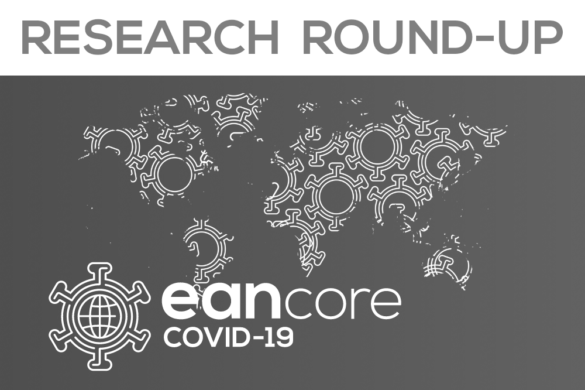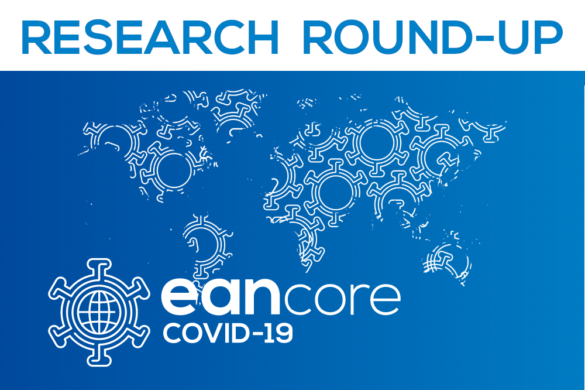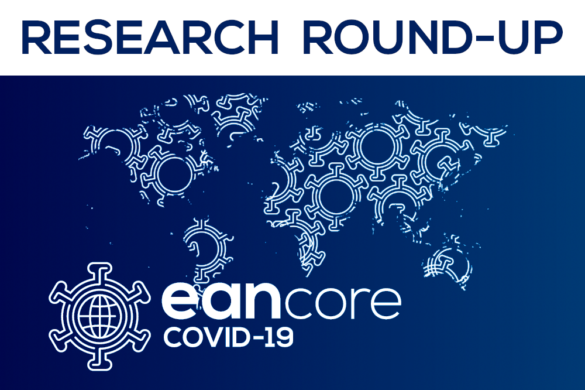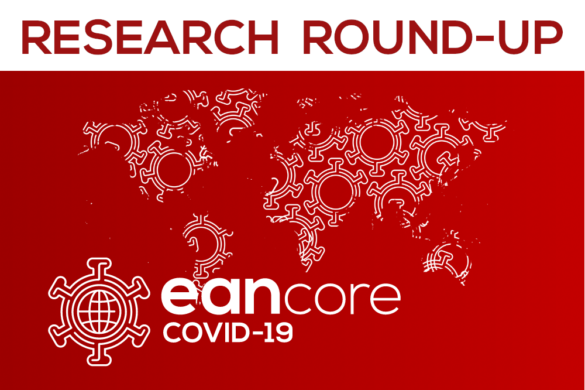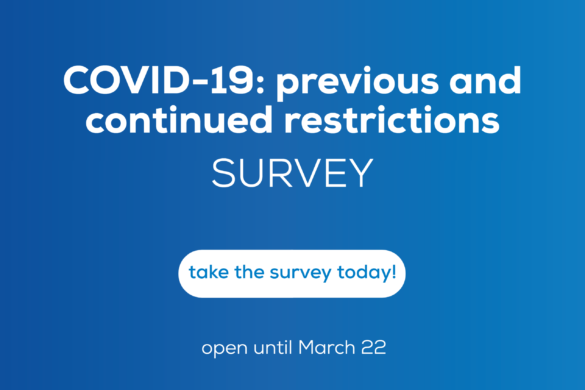Cross-sectional case-control studies (Blue)
Read on for our highlighted selection of Covid-related cross-sectional case control studies from the scientific press for May 2022:
- International Prevalence and Mechanisms of SARS-CoV-2 in Childhood Arterial Ischemic Stroke During the COVID-19 Pandemic
- Clinical outcomes of COVID-19 infection among patients with Alzheimer’s disease or mild cognitive impairment
- Prolonged unconsciousness is common in COVID-19 and associated with hypoxemia
International Prevalence and Mechanisms of SARS-CoV-2 in Childhood Arterial Ischemic Stroke During the COVID-19 Pandemic
Data from the early pandemic revealed that 0.62% of children hospitalised with severe acute respiratory syndrome coronavirus 2 (SARS-CoV-2) had an acute arterial ischemic stroke (AIS). In a larger cohort from June 2020 to December 2020, the authors of this article sought to determine whether their initial point estimate was stable as the pandemic continued and to understand radiographic and laboratory data that may clarify mechanisms of pediatric AIS in the setting of SARS-CoV-2.
They surveyed international sites with pediatric stroke expertise to determine numbers of hospitalised SARS-CoV-2 patients <18 years, numbers of incident AIS cases among children (29 days to <18 years), frequency of SARS-CoV-2 testing for children with AIS, and numbers of childhood AIS cases positive for SARS-CoV-2 June 1 to December 31, 2020. Two stroke neurologists with 1 neuroradiologist determined whether SARS-CoV-2 was the main stroke risk factor, contributory, or incidental. Sixty-one centers from 21 countries provided AIS data. Forty-eight centers (78.7%) provided SARS-CoV-2 hospitalisation data. SARS-CoV-2 testing was performed in 335/373 acute AIS cases (89.8%) compared with 99/166 (59.6%) in March to May 2020, P<0.0001. Twenty-three of 335 AIS cases tested (6.9%) were positive for SARS-CoV-2 compared with 6/99 tested (6.1%) in March to May 2020, P=0.78. Of the 22 of 23 AIS cases with SARS-CoV-2 in whom the authors could collect additional data, SARS-CoV-2 was the main stroke risk factor in 6 (3 with arteritis/vasculitis, 3 with focal cerebral arteriopathy), a contributory factor in 13, and incidental in 3. Elevated inflammatory markers were common, occurring in 17 (77.3%). From centers with SARS-CoV-2 hospitalisation data, of 7231 pediatric patients hospitalised with SARS-CoV-2, 23 had AIS (0.32%) compared with 6/971 (0.62%) from March to May 2020, P=0.14. The authors concluded that the risk of AIS among children hospitalised with SARS-CoV-2 appeared stable compared with their earlier estimate. Among children in whom SARS-CoV-2 was considered the main stroke risk factor, inflammatory arteriopathies were the stroke mechanism.
Beslow LA, Agner SC, Santoro JD, Ram D, Wilson JL, Harrar D, Appavu B, Fraser SM, Rossor T, Torres MD, Kossorotoff M, Zuñiga Zambrano YC, Hernández-Chávez M, Hassanein SMA, Zafeiriou D, Dowling MM, Kopyta I, Stence NV, Bernard TJ, Dlamini N; International Pediatric Stroke Study Group. International Prevalence and Mechanisms of SARS-CoV-2 in Childhood Arterial Ischemic Stroke During the COVID-19 Pandemic. Stroke. 2022 Apr 5:101161STROKEAHA121038250. doi: 10.1161/STROKEAHA.121.038250.
Clinical outcomes of COVID-19 infection among patients with Alzheimer’s disease or mild cognitive impairment
Alzheimer’s disease (AD) and COVID-19 share common risk factors including hypertension. Angiotensin converting enzyme inhibitors (ACEI) and angiotensin II receptor blockers (ARB) are frequently prescribed antihypertension medications. This study analysed 436,823 veterans tested for SARS-CoV-2 infection. The authors conducted both classical and propensity score weighted logistic models to compare COVID-19 outcomes between patients with AD or mild cognitive impairment (MCI) to those without cognitive impairment and examined effect of ACEI/ARB prescription. There was a statistically significant association between AD and increased odds of infection and mortality. MCI was not found to be a risk factor for infection. Subjects with MCI exhibited poor clinical outcomes. Prescribing ARBs but not ACEIs was significantly associated with a lower risk of COVID-19 occurrence among AD and MCI patients. The authors concluded that there is significant association between AD and increased risk of COVID-19 infection and odds of mortality. Subjects with MCI defined by claims data exhibit poor clinical outcomes, but MCI was not found to be a risk factor for severe acute respiratory syndrome coronavirus 2 infection. Prescribing angiotensin II receptor blockers was significantly associated with a lower risk of COVID-19 occurrence among AD/MCI patients.
Wang Y, Li M, Kazis LE, Xia W. Clinical outcomes of COVID-19 infection among patients with Alzheimer’s disease or mild cognitive impairment. Alzheimers Dement. 2022 Apr 4. doi: 10.1002/alz.12665.
Prolonged unconsciousness is common in COVID-19 and associated with hypoxemia
The objective of this multi-center, retrospective, cohort study was to estimate the time to recovery of command-following and associations between hypoxemia with time to recovery of command-following in COVID-19 patients. During the initial surge of the United States’ pandemic (March-July 2020) the authors estimate the time from intubation to recovery of command-following, using Kaplan Meier cumulative-incidence curves and Cox proportional hazard models. Patients were included if admitted to one of three hospitals with severe COVID-19, endotracheal intubation for at least seven days, and impairment of consciousness (Glasgow Coma Scale motor score <6). 571 patients of the 795 patients recovered command-following. The median time to recovery of command-following was 30 days (95%-confidence interval [CI]:27-32). Median time to recovery of command-following increased by 16 days for patients with at least one episode of an arterial partial pressure of oxygen (PaO2) value ≤55mmHg (p<0.001), and 25% recovered ≥10 days after cessation of mechanical ventilation. The time to recovery of consciousness was associated with hypoxemia (PaO2 ≤55mmHg hazard ratio (HR):0.56; 95%-CI:0.46-0.68; PaO2 ≤70 HR:0.88; 95%-CI:0.85-0.91), and each additional day of hypoxemia decreased the likelihood of recovery, accounting for confounders including sedation. These findings were confirmed among patients without any imagining evidence of structural brain injury (n=199), and in a non-overlapping second surge cohort (N=427, October-April 2021). The authors concluded that survivors of severe COVID-19 commonly recover consciousness weeks after cessation of mechanical ventilation. Long recovery periods are associated with more severe hypoxemia. This relationship is not explained by sedation or brain injury identified on clinical imaging and should inform decisions about life-sustaining therapies.
Waldrop G, Safavynia SA, Barra ME, Agarwal S, Berlin DA, Boehme AK, Brodie D, Choi JM, Doyle K, Fins JJ, Ganglberger W, Hoffman K, Mittel AM, Roh D, Mukerji SS, Der Nigoghossian C, Park S, Schenck EJ, Salazar-Schicchi J, Shen Q, Sholle E, Velazquez AG, Walline MC, Westover MB, Brown EN, Victor J, Edlow BL, Schiff ND, Claassen J. Prolonged unconsciousness is common in COVID-19 and associated with hypoxemia. Ann Neurol. 2022 Mar 7. doi: 10.1002/ana.26342.





